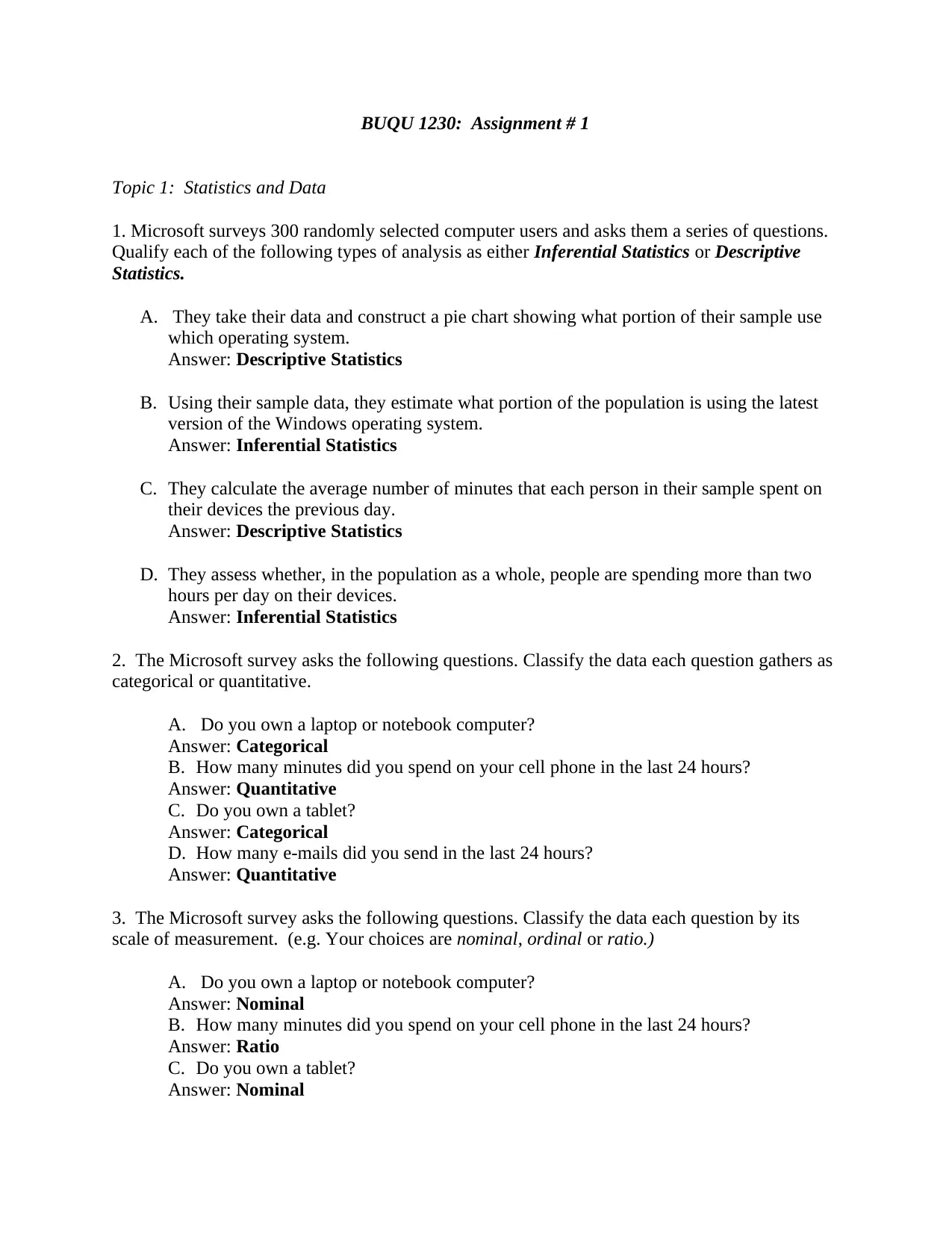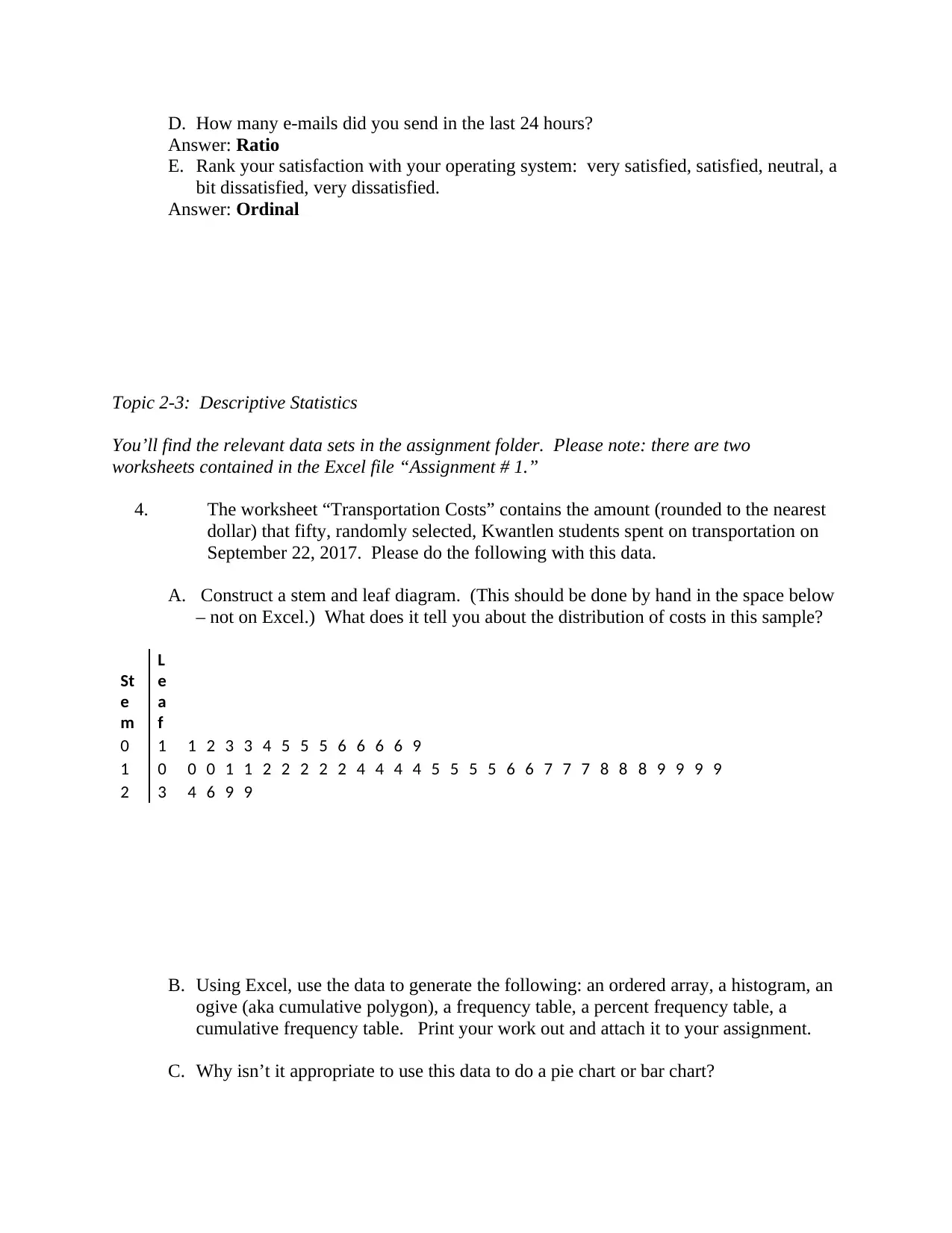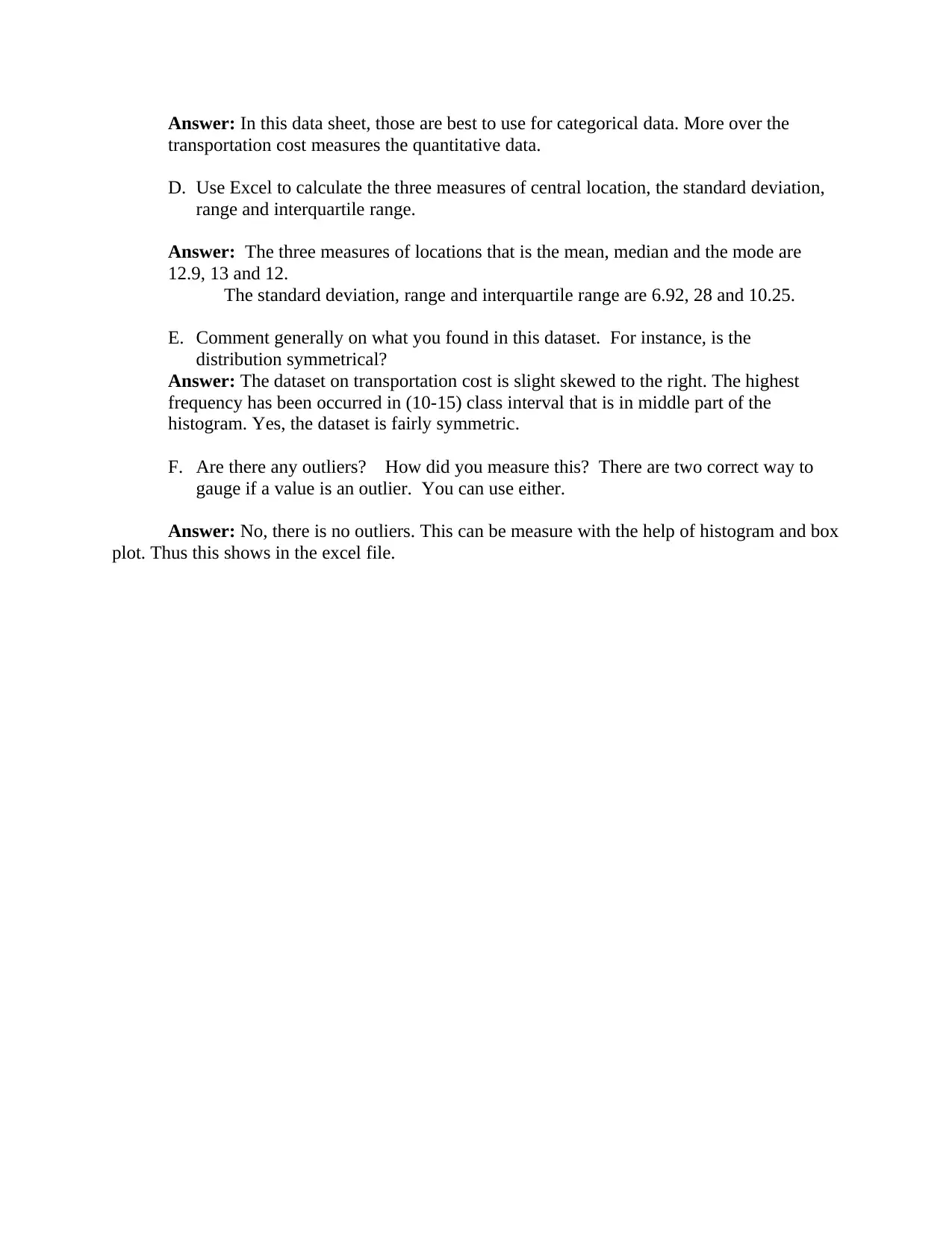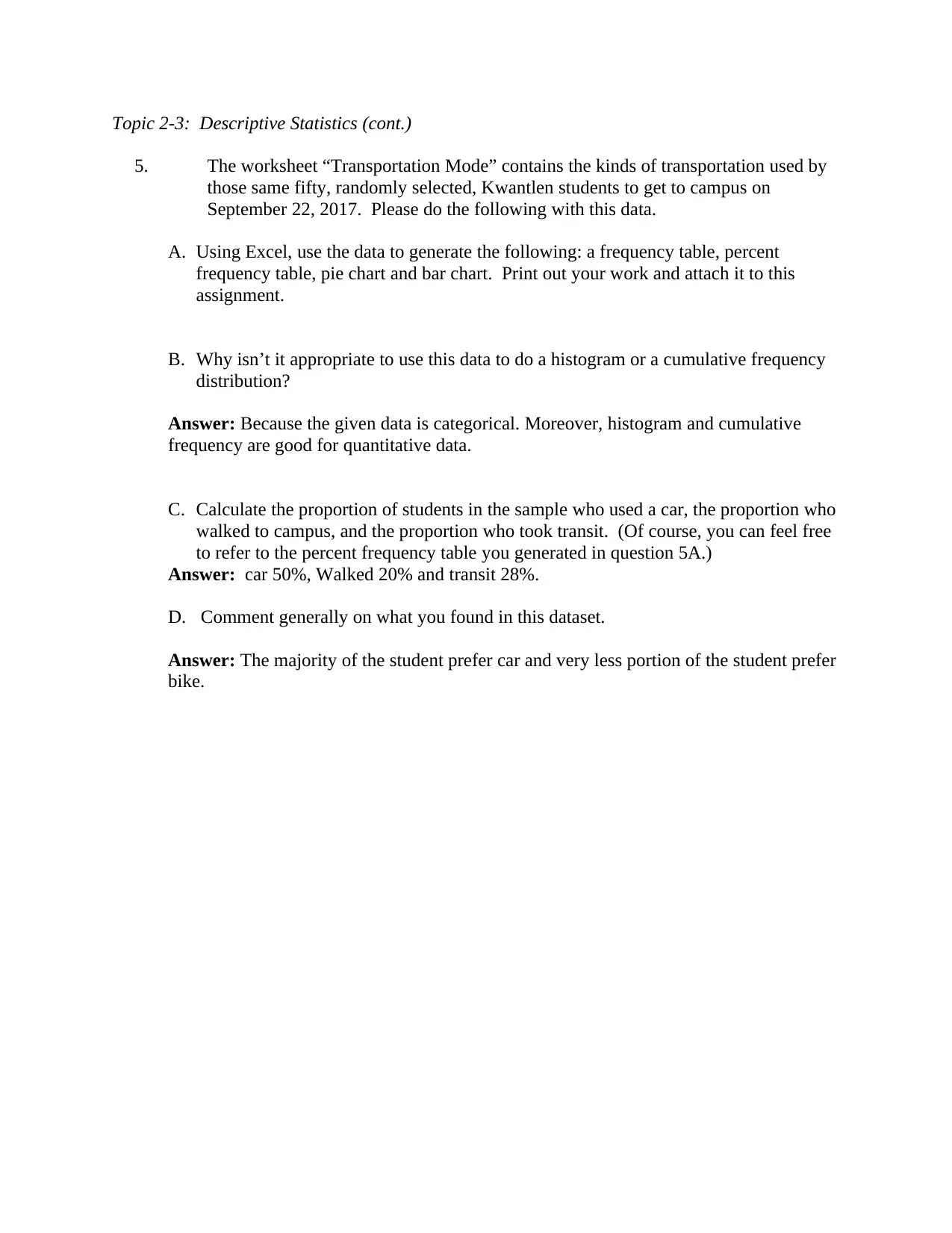BUQU 1230, Kwantlen: Assignment 1 - Descriptive and Inferential Stats
VerifiedAdded on 2022/08/23
|4
|1000
|27
Homework Assignment
AI Summary
This assignment solution for BUQU 1230 covers fundamental statistical concepts and data analysis techniques. It begins by classifying types of statistical analysis as descriptive or inferential and categorizes data as categorical or quantitative, classifying the scale of measurement. The solution then delves into descriptive statistics using transportation cost data from Kwantlen students. It includes constructing a stem and leaf diagram, generating ordered arrays, histograms, ogives, frequency tables, and calculating measures of central location, standard deviation, and interquartile range using Excel. The solution also analyzes transportation mode data, generating frequency tables, percent frequency tables, pie charts, and bar charts. The assignment requires the calculation of proportions and drawing conclusions from the datasets, providing a comprehensive understanding of statistical methods and their application.
1 out of 4











![[object Object]](/_next/static/media/star-bottom.7253800d.svg)